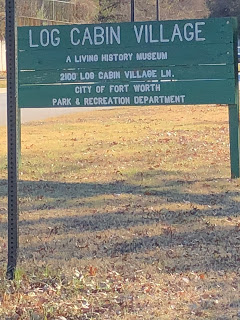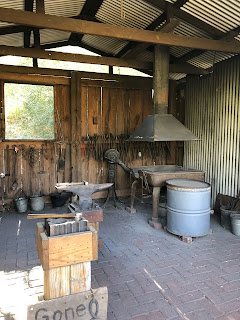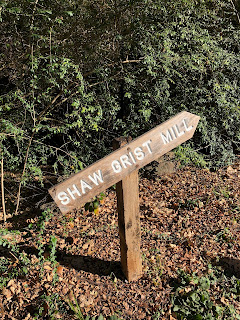Welcome to my weekly column #TravelTuesday featuring places I've discovered during my research trips or just wandering around in historical areas. I hope you enjoy my discoveries.

Today we will visit the Log Cabin Village, a nice little gem hidden in Fort Worth, Texas right across from the well-known Fort Worth Zoo (one of the best in the country). It's a well-kept site featuring 11 buildings ranging from the 1840's through the 1890's. Each building is wheelchair/stroller accessible and connected via a cement walking trail.



Signs you will see as you drive into the village parking lot (right across from the Zoo).

In the yard lies a nice buckboard specimen. It is fenced off to keep people from climbing onto it.

You enter the village via the two-story Foster House at the front; you pay admission in the gift shop. The Foster House was built in Port Sullivan, Texas dating around the 1850s. The family and tenant farmers lived in the house until 1939. A storm damaged the roof in 1965. The house was then donated to the Log Cabin Village by relative, John William Foster, for restoration and repair.


Inside the Foster House you will find the 1890's style parlor containing a portrait of the original owner, Harry Foster. The rosewood piano was given to Harry's bride, Martha, in 1839. It was shipped to their house in Port Sullivan in 1859 by steamboat. The green parlor furniture (the chair in front of the fireplace and the settee against the right wall) remained in the Foster family until they were donated in 2006. The drop-leaf table on the right was also donated by the Foster family.


Also on display inside the Foster House is a pair of Lancaster Clogs (men's shoes), mid-late 19th century.
Learn more about the village by checking out the official site -
www.logcabinvillage.org
Log Cabin Village Address: 2100 Log Cabin Village Ln, Fort Worth, Texas 76109
















































